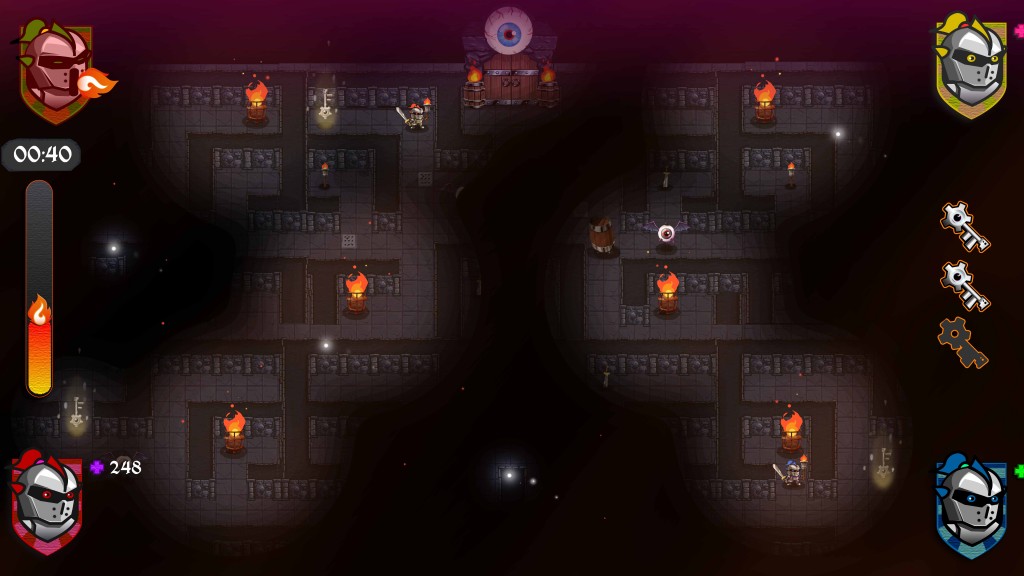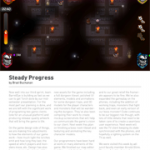
Now well into our third sprint, team BarrelEye is building as fast as we can to get Torch done by our mid-semester presentation. For the most part our planning is done, and we are left with the significant work of programing two game clients (one for an unusual platform) and producing release-quality artwork that will bring the game to life.
On the game design side of things, we are making fine adjustments to how the elements of our game work – how much light the torches emit and how long they last, the speed at which players and monsters move, etc. Design has also been exploring the details of the boss encounter for the game, helping us to control our scope by creating something simple and engaging that will end our experience well. The game’s title screen and sign-in sequence have also been specified.
The art team has created lots of new assets for the game including a full dungeon tileset, polished UI elements, models and animations for some dungeon traps, and 3D models for the player characters and monsters that will be wandering the dungeon. They’ve also been compiling their work to create mockup screenshots that will help us communicate the game’s vision to our client. Next week they plan on finishing a boss room tileset and texturing and animating the key character models.
Our programmers have been hard at work on many elements of the game. We finished our map editor tool this week (which the designers were grateful for). We’ve redesigned our network communication and we now officially have the phone client talking to the TV client, passing messages back and forth to be interpreted and keep the game state synchronized. The TV client has been expanded to read and load the dungeon map, and to our great relief the framerate appears to be fine. We’ve also expanded the gameplay on the phones, including the addition of working traps, monsters that fight back, and even an early version of our boss monster! Code continues to be our biggest risk though, with lots of little details that need to be taken care of to create a seamless user experience. Next week will see the TV client keeping its state synchronized with the phones, and hopefully a lighting system on the TV as well.
We were visited this week by adjunct faculty member Arnold Blinn. We gave Arnold a demo of our game and had an engaging conversation with him about the technical details of the experience and the different strategies we could apply to minimize the impact of network latency. Arnold also asked us about our goals for the experience, and the ways in which we were focusing our work on those goals.

